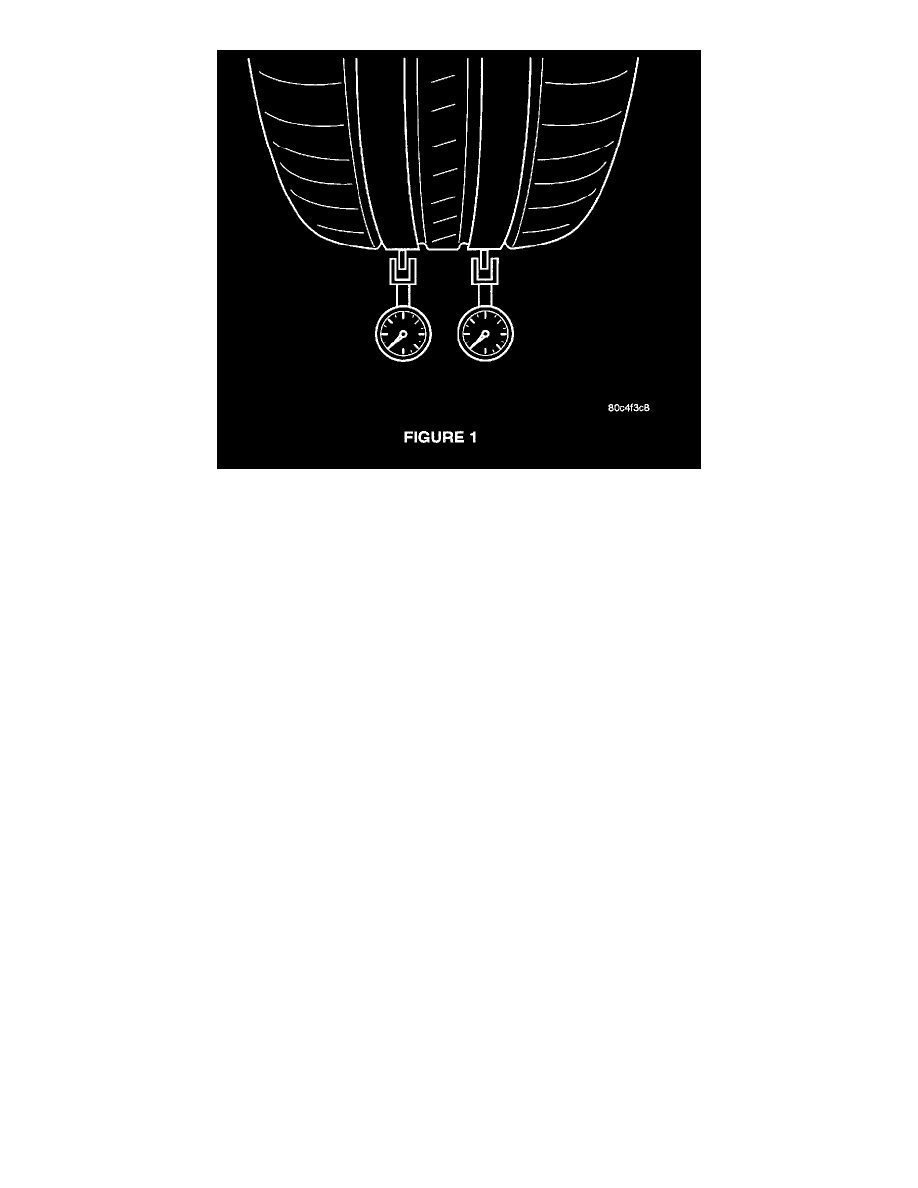Concorde V6-2.7L VIN R (1998)

^
Check system runout using Miller Special Tool D-128-TR or equivalent. Apply masking tape around the circumference of the tire in the location
that is to be measured (Figure 1).
^
System runout can be verified by re-indexing the tire/wheel assembly on the hub. If reindexing the tire/wheel assembly corrects or reduces the
system runout, check the hub runout as described on page 5-16 of the 2000 Concorde/Intrepid/LHS/300M service manual (Publication
No.81-270-0040) and repair as necessary. If the system runout is still excessive continue with this procedure.
^
Check tire/wheel runout at inner and outer shoulder with assemblies off vehicle (Figure 1) Assembly runout should be less than .040" with no tread
"dips" or "steps". Tread "dips" and "steps" can be identified by by spikes in the runout gauge.
^
Tread "dips"; Rapid decrease then increase in run out greater than .025" over 4" of tread circumference.
^
Tread "steps"; Rapid decrease or increase in runout greater than .025" over 4" of tread circumference.
^
If runout exceeds limits, mark original location of tire on wheel and dismount tire to verify wheel vs. tire contribution.
^
Radial runout of the wheel measured at the tire bead seat should not exceed .010" for aluminum wheels and .020" for steel wheels as
described on page 22-9 of the 2000 Concorde/Intrepid/LHS/300M service manual (Publication No.81-270-0040).
^
Tire/wheel assembly runout can be improved by re-indexing the tire to the wheel 180 degrees, as described in the Tire and Wheel
Match Mounting Procedure on page 22-6 of the 2000 Concorde/Intrepid/LHS/300M Service Manual (Publication No.81-270-0040).
^
Road test vehicle for at least 5 miles. If vibration persists, and all components tested are within specification, the tires may have an excessive radial
force condition. Radial forces can only be checked as indicated below. If this equipment is not available consult with the tire manufacturer.
Radial Forces can be checked using the Hunter GSP 9700 Vibration Control System (balancer), if available. Use the following reference values for
measuring assembly radial forces when diagnosing vibration complaints:
Total Radial Force Variation (RFV)
Less Than 20 Lbs.
Radial First Harmonic (R1H)
Less Than 14 Lbs.
Radial Second Harmonic (R2H)
Less Than 9 Lbs.
Radial forces greater than the reference values do not automatically mean the tire is out of specification. Be sure to examine the wheel runout. Assembly
RFV and R1H can often be reduced by re-indexing the tire on the wheel.
POLICY: Information Only
